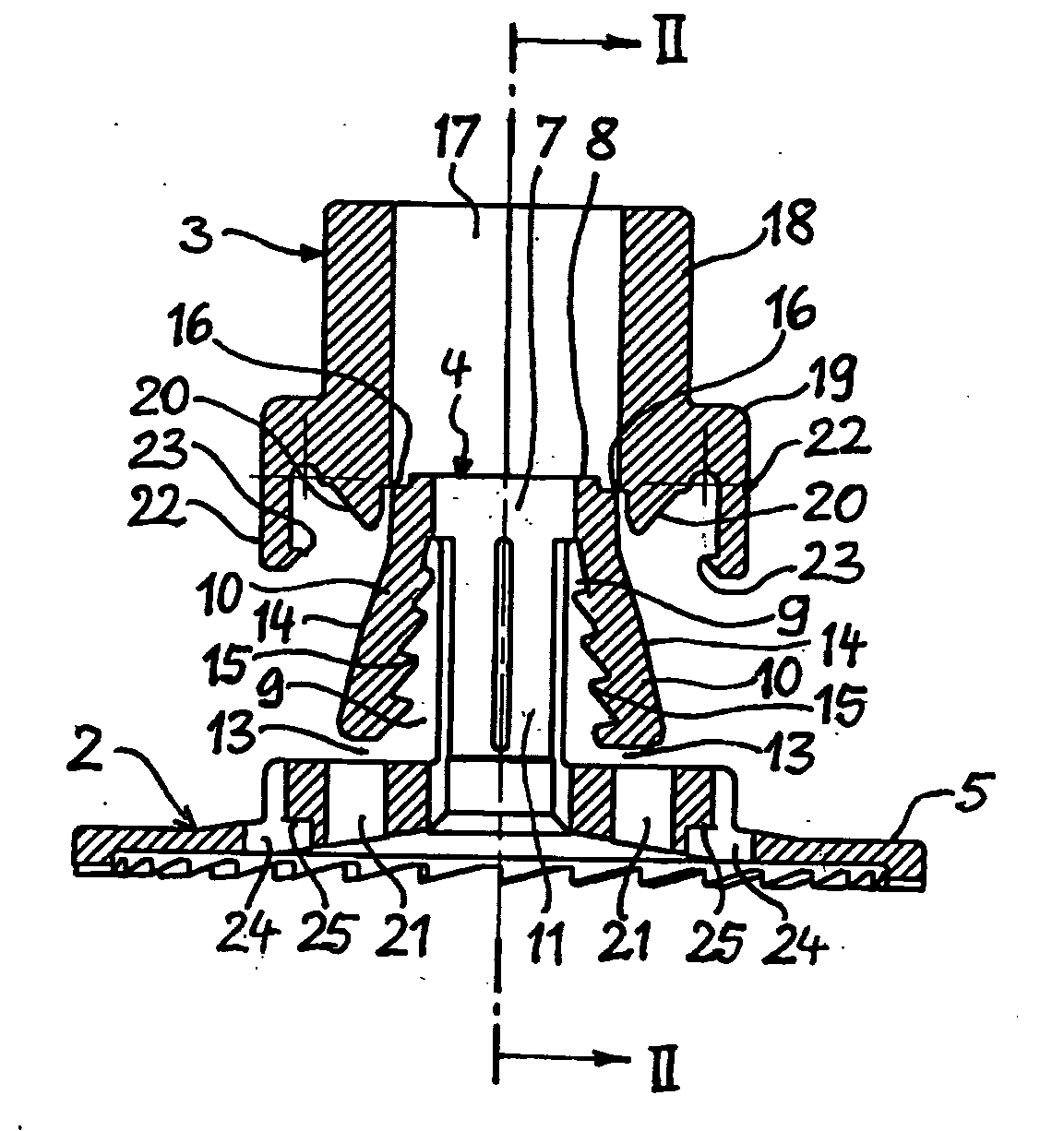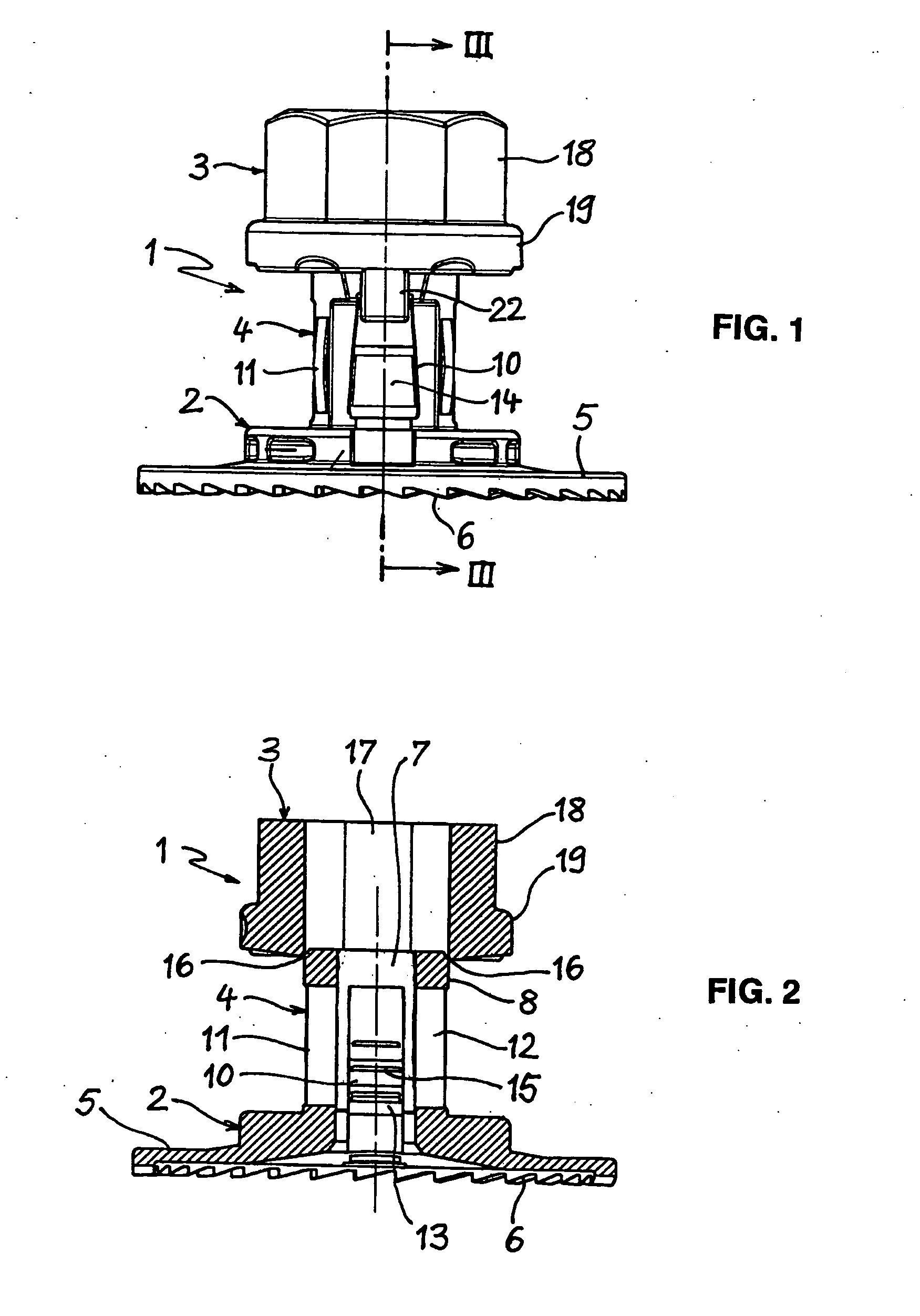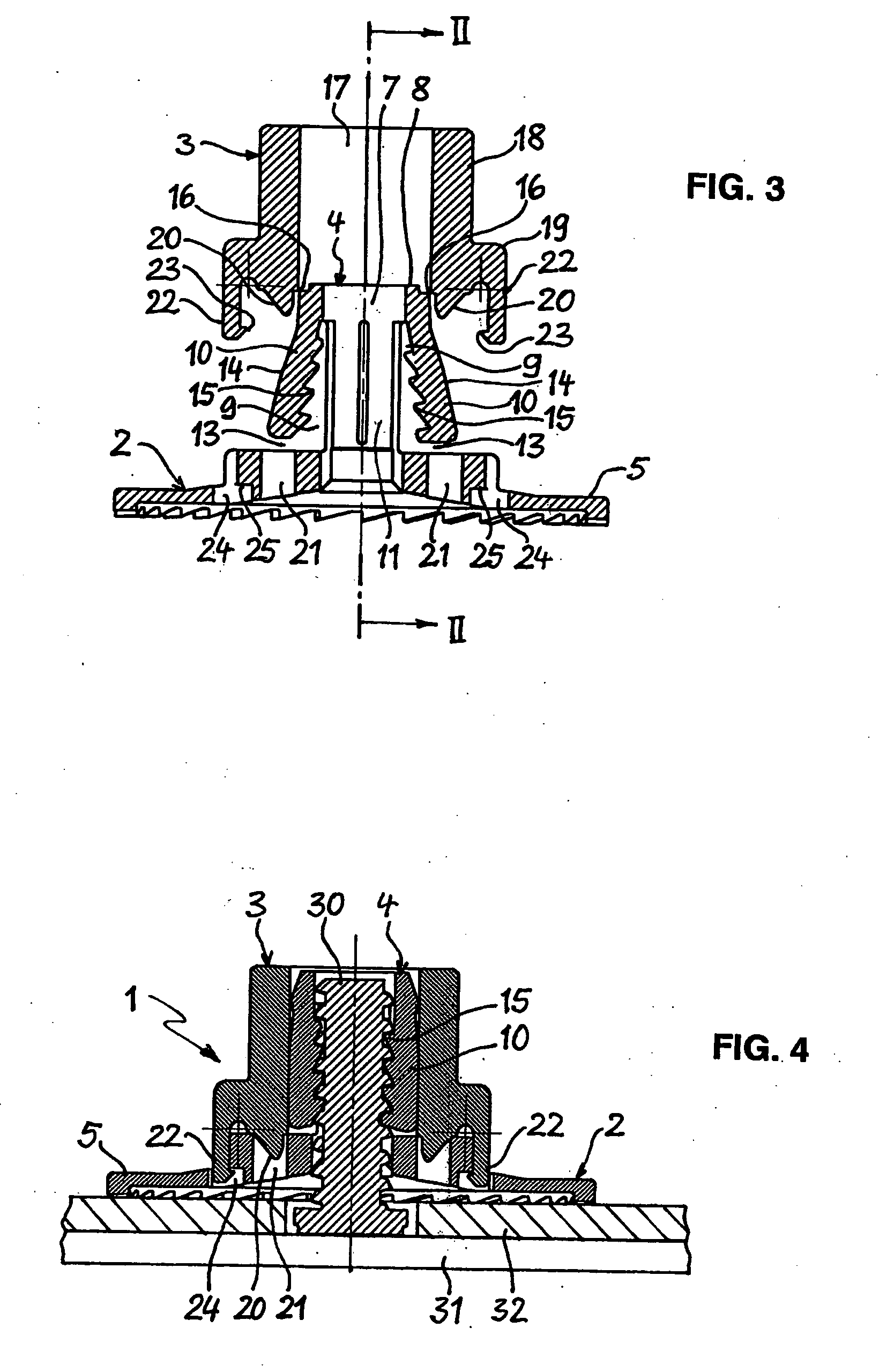Fastener for application to a threaded stud
a technology of threaded studs and fasteners, which is applied in the direction of threaded fasteners, screws, fastening means, etc., can solve the problems of increasing the radial clamping force and the difficulty of turning the fastener, so as to improve the ease of use of the fastener, the effect of high retention or pull-off force and no resistan
- Summary
- Abstract
- Description
- Claims
- Application Information
AI Technical Summary
Benefits of technology
Problems solved by technology
Method used
Image
Examples
Embodiment Construction
[0019] The fastener 1 shown in the drawings is made of plastic in a single piece and comprises a clamping element 2 and a clamping sleeve 3. The clamping element 2 has a sleeve-shaped section 4 and a plate-shaped flange 5 located on one end of the section 4. The flange 5 has, on the outside edge of its side facing away from the section 4, saw-tooth-like toothing 6. The teeth in the toothing 6 are oriented such that, when in contact with a mating surface, they increase the resistance to rotation in the direction in which the fastener located on a threaded stud can be unscrewed.
[0020] The clamping element 2 has a cavity 7 to accommodate a threaded stud. The cavity 7 is composed essentially of a cylindrical bore that passes through the section 4 and the flange 5, wherein the center axis of the bore coincides with the longitudinal axis of the clamping element 2. The section 4 of the clamping element 2 forms a closed ring 8 at its end opposite the flange 5. Between the ring 8 and the fl...
PUM
 Login to View More
Login to View More Abstract
Description
Claims
Application Information
 Login to View More
Login to View More - R&D
- Intellectual Property
- Life Sciences
- Materials
- Tech Scout
- Unparalleled Data Quality
- Higher Quality Content
- 60% Fewer Hallucinations
Browse by: Latest US Patents, China's latest patents, Technical Efficacy Thesaurus, Application Domain, Technology Topic, Popular Technical Reports.
© 2025 PatSnap. All rights reserved.Legal|Privacy policy|Modern Slavery Act Transparency Statement|Sitemap|About US| Contact US: help@patsnap.com



